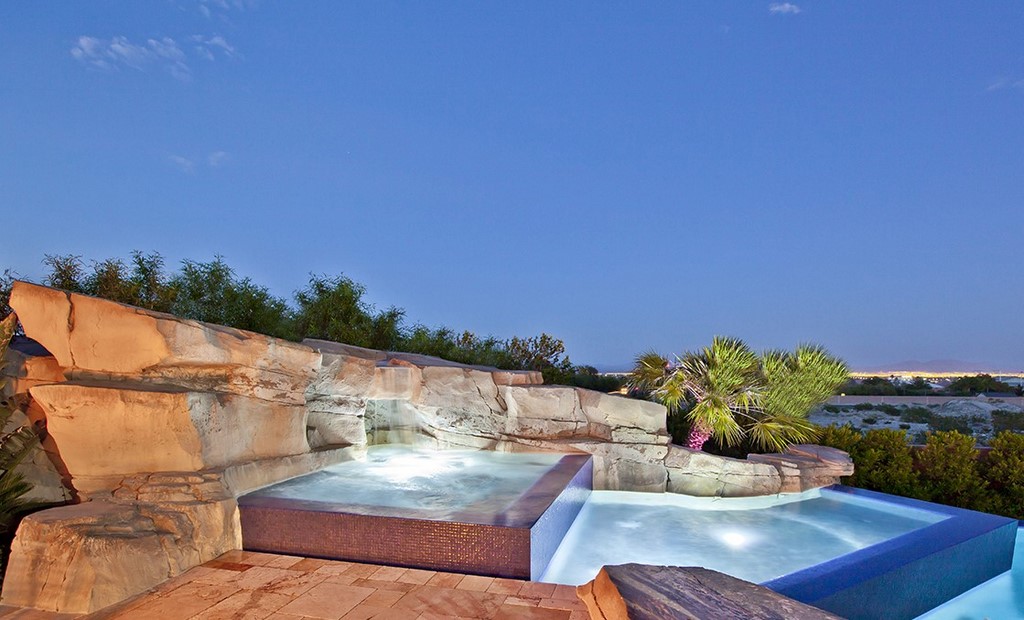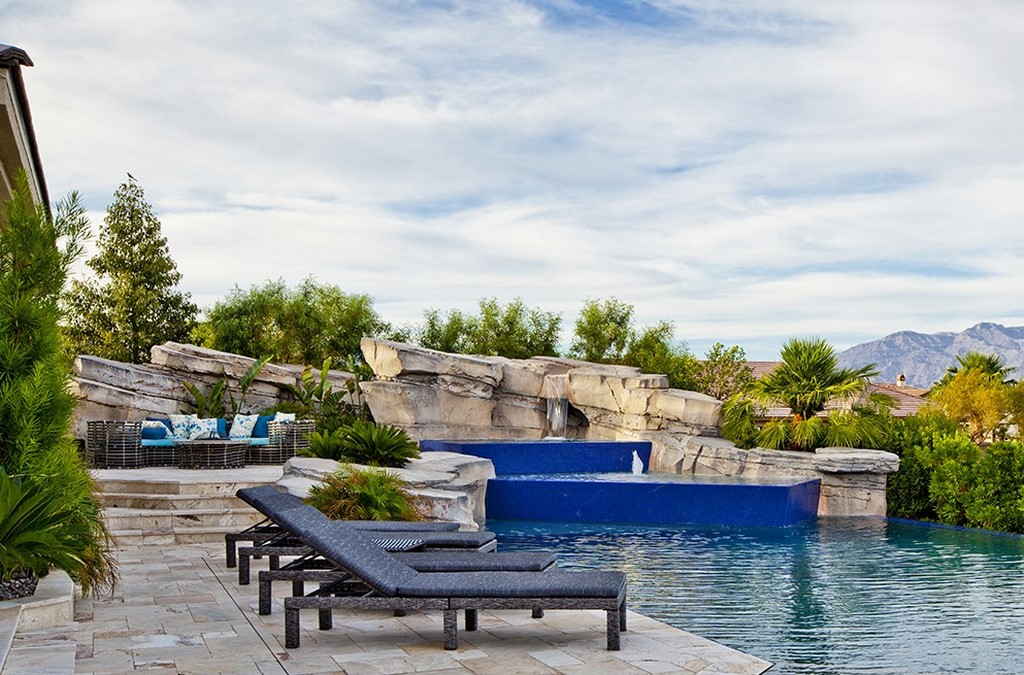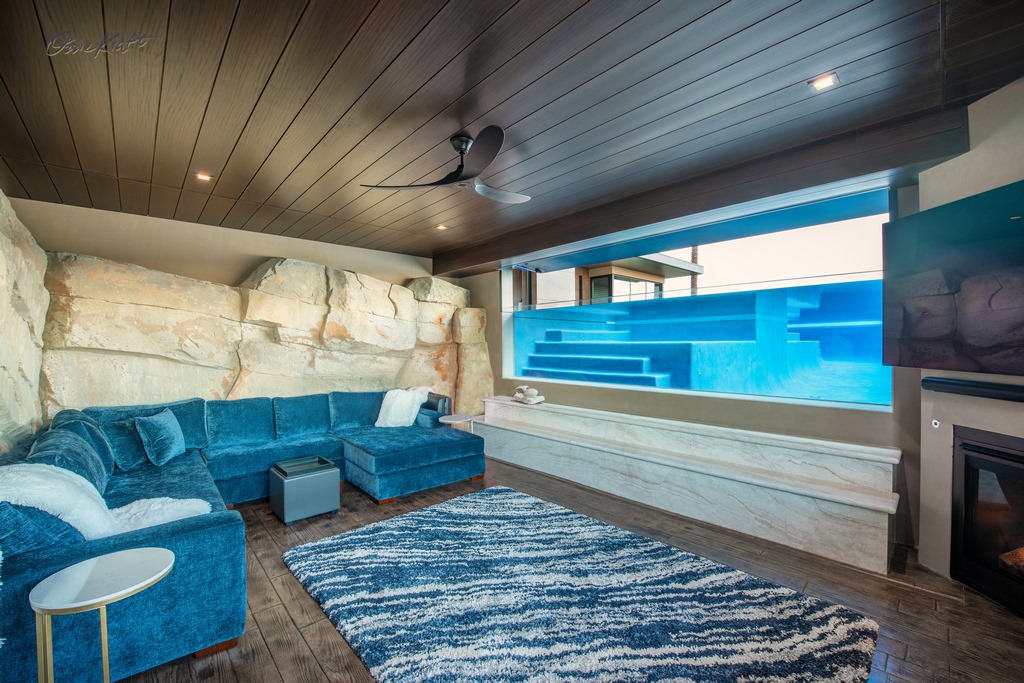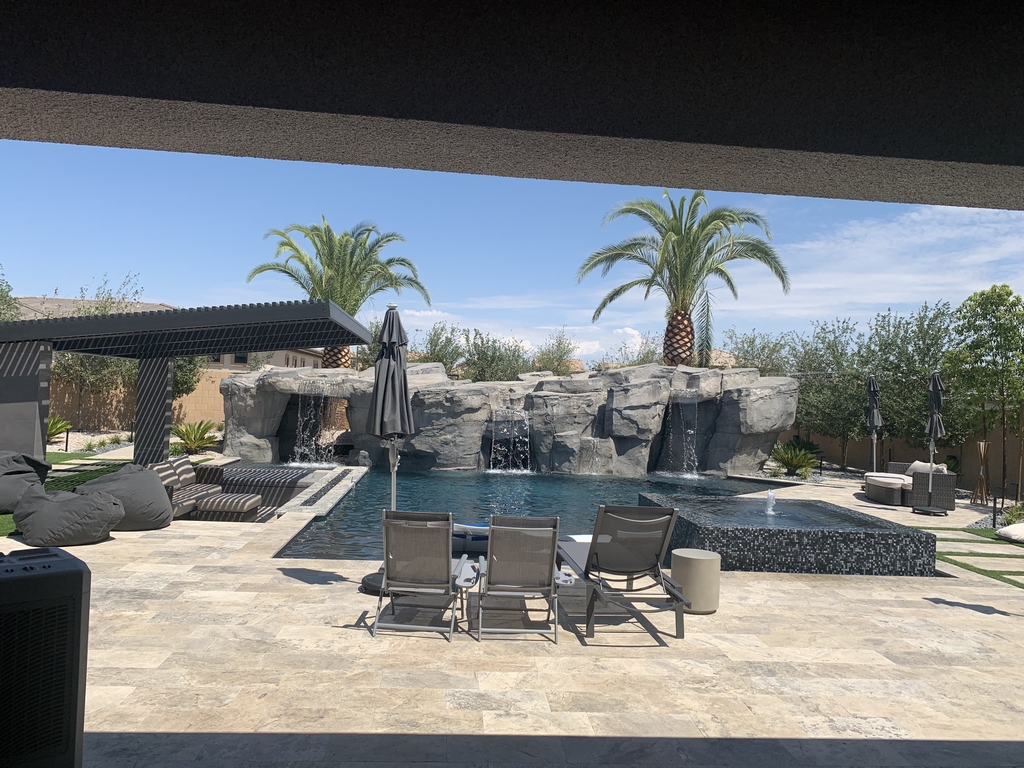Making Rocks Work


The marriage between rockwork and architecture can be a contentious one, especially when the visual relationship isn’t thought out ahead of time. Making rocks work in built spaces requires strategic thinking, says Terence Thornton and Kevin Kraft, with an eye toward the way nature does things.
By Terence Thornton & Kevin Kraft
We’ve all seen it — rockwork, natural or artificial, that doesn’t fit the setting and looks horribly out of place. It can be especially egregious in and around swimming pools. The big pile of faux rock, aka. “dinosaur poop” at one end of a “lagoon” pool with clean-line, knife-edge falls over the squared grotto opening with no reference to the surrounding landscape. There are countless examples. Sometimes, the rockwork is so unbelievable, even natural rocks can be made to look fake.
Yet, in other settings, it can be amazing how architecture and the natural power and beauty of rock formations almost magically work together. Fallingwater, the iconic house built over a waterfall in Pennsylvania by Frank Lloyd Wright, is arguably the greatest example of architecture, rock formations, and water coming together to create a place of historic beauty.
Even though there are all these contrasting elements right next to each other at Fallingwater, it doesn’t look contrived. Mr. Wright took it to the extreme by placing the man made structure directly on top of the rock work and stream on the site, in essence forcing the harmony between man and nature. Both the architecture and the landscape are made more beautiful because of the visual proximity to the other. The question becomes, what does it mean, specifically, for it all to look so comfortable together?
We know Wright pulled it off, now can we do the same?
A TIGHT FIT
How to effectively blend rockwork and architecture is one of those conundrums that will draw a variety of responses depending upon who you ask. It’s a challenge we’ve taken on directly in our work at Ozzie Kraft Enterprises, and we believe we’ve developed an approach that can be successful in the right settings, or with the right context.
The big bottom line is that a rock formation should appear as though it was made by nature, and at some point, someone came along and built a pool up next to it. The rock formation must look like it was supposed to be there.
The rock formation should be the driving factor from a design standpoint, and not window dressing you’re adding after the fact. You keep in the back of your mind, okay, we’re going to want a spa here, we’re going to want a wet deck over here; but, the rock formation is the most important element.
Looking believable is foremost, and then you build up to it. Not the other way around.
Maybe you built a spa directly into a rock formation, or the pool uses existing rockwork as part of its structure. You see some of those pools on Italy’s Amalfi Coast, or in the Greek isles, where they build pools into the rocky cliffs. In the right setting, the marriage of rock and architecture can be breathtaking.
The first consideration is to use indigenous rock formations as a model. Here in the Las Vegas area, we go with more of a sandstone look, with lots of strata in our rockwork, just like what nature has created here locally in the mountains, The strata give rockwork, in a sense, an architectural look to it. It’s mostly straight lines and often horizontal or near horizontal lines.
There’s a lot of horizontal geometry in creating landscapes and pools and decks to begin with; so, we take advantage of that by leaning on the natural orientation of sedimentary rock formations found in this area.
That approach wouldn’t work in many other places. In Lake Tahoe for example, the geology is completely different than it is here. It’s based on glacial activity, and as a result the rocks are typically rounded. That’s much more difficult to recreate with artificial rock because of the spaces between the rocks that are necessary because of the shape. You don’t have the advantage of the layered geometry.
VISUAL OUTCOMES
While adhering to natural forms is always top of mind, it’s more than just the rock formation itself, but the entire setting and how the landscape brings nature next to man-made structures. While it’s important to achieve the impression that the rockwork was there first, in reality we’re usually installing the pool first — or at the same time — because the rocks are an integral part of the structure.
As is true of most pool and landscape projects, the house is there first. We pay close attention to the colors and materials used on the house structure so we can harmonize the finish work on the rock material with the house. The impression we seek to achieve, however, is whomever built the house was harmonizing their design choices with the existing rockwork. We work the same magic between the rock formations and decks, often making it look like the deck material was selected to go with the rocks, even though in reality it was the exact opposite.
That’s not something the viewer is necessarily going to think about in a literal way, but the scene will feel more authentic because all the elements have a reason for being there. The rock placement must be intentional, and distributed to create the sense that it’s all part of the local geology, like you’re seeing the visible parts of much larger formations that exist beneath the surface.
Most of our artificial rockwork is carved by hand, which gives us complete control over the shapes and details. We do some panel work, depending on the situation, but 95% of our stuff is hand-carved. Our guys are very familiar with the different formations. Sometimes we’ll have a project and find a certain rock formation in the backdrop or close by. We’ll study it to determine that we want this part of this rock formation coming down into the deck area, for example. And, we want another part of the formation over there where it functions as a barrier between different areas in the outdoor space.
We’re always on the lookout for inspiration in nature. There’s a rock formation on one of my favorite rides up in the mountains behind Las Vegas that we’ve used as a model.
Lagoon pools, that look like something you’d find on a tropical island, have fallen out of style. Contemporary styling now dominates the market, and posing a challenge when incorporating rockwork.
As a designer, I used to think of two distinct styles: very natural, free-form, organic shapes, perfect for rockwork; and, at the other end of the spectrum, very clean-line, modern, contemporary, where no rock work seemingly belongs. You start putting the elements together, you realize, there is tremendous potential harmony.
CONTOURING WATER
The way water moves over rockwork has everything to do with creating a sense of realism. Again, the key is to study nature.
This is where we see some very common pitfalls with rockwork. In nature, water does not emerge from the top of a rock formation and then cascade down its face in steplike, uniform cascades. This always looks contrived and is why we never have water emerge from the highest point of the structure. Even if it’s just a few inches, providing background makes it look more realistic. And we always conceal the source of the water flow.
In most situations, we’ll create multiple waterfalls of varying size and volume. Furthermore and we vary the size and location of the waterfall weirs. It’s also helpful to keep the volume of water in mind. In nature, you’ll often see small delicate waterflows over rock large formations. In built environments, there’s a tendency to think if you build a big formation, it should have big water, resulting in flows that are often unnaturally big and vigorous. We believe that a few small rivulets are often much more convincing than a singular large sheet of water.
Owners might want things like water in a uniform sheet over the opening to large grotto. They’ve seen it so times, they might be conditioned to think that’s the way it should be done.
As professionals being paid to make the best decisions on the client’s behalf, sometimes we have to guide them toward better choices. Pointing out the way nature does things and explaining how we can meet their needs and wants — and create a more believable scene — is usually convincing.
Knowing when to say no and walk away from a situation that is doomed to be an eyesore can be a tough call. I’ve found that by sticking to these key principles, no one will need to apologize for the way the rocks appear on a project.
Terence Thornton is a watershape designer and project manager for Ozzie Kraft Enterprises, a custom watershape design and build firm located in Las Vegas, NV. Established in 1942, Ozzie Kraft became the first swimming pool contractor based in Las Vegas. Since 1984 Kevin Kraft, Ozzie Kraft’s’ son, has continued to maintain the quality reputation started in the 40’s by his father. He has also received 40 international design awards for his custom swimming pool designs.













